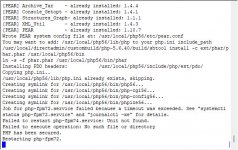Richard G
Verified User
@Amoled I've been anxious to change too, also because of .htaccess and other stuff. I change a couple of years back and never was sorry and wouldn't go back anymore.
I don't agree with Sparek that .htaccess files to end user control can be a recipe for disaster as users always had control over .htaccess also with mod_php. And one can set limits as to the max amount of for example php memory_limit a user can configure in a .htaccess file.
There is a documentation about how to easily switch to php-fpm and don't forget any commands, you can find it here.
I don't agree with Sparek that .htaccess files to end user control can be a recipe for disaster as users always had control over .htaccess also with mod_php. And one can set limits as to the max amount of for example php memory_limit a user can configure in a .htaccess file.
There is a documentation about how to easily switch to php-fpm and don't forget any commands, you can find it here.


